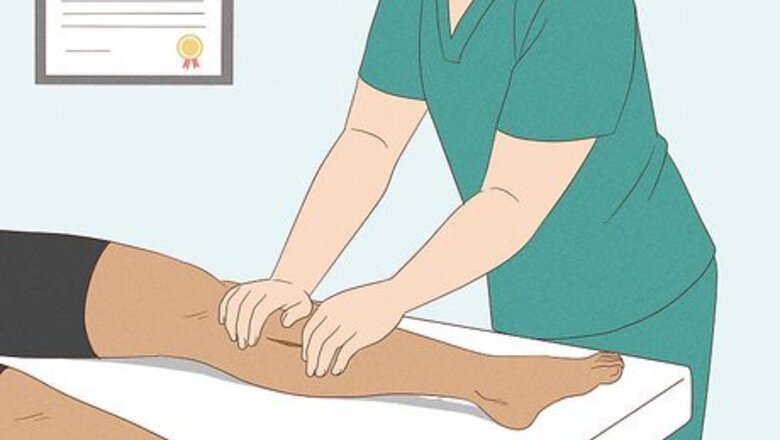
views
- Before getting rid of scar tissue, contact your healthcare professional to determine the best treatment for you–don't attempt to break up scar tissue at home.
- Physical therapists perform different massages, from cross-friction to myofascial, to soften the scar tissue, reducing the pain of the injured site.
- To minimize the appearance of scar tissue, laser therapy and steroid injections are effective treatments.
What is the best way to break up scar tissue?

Massage performed by a physical therapist heals scar tissue effectively. This method promotes gentle stretching of the scar tissue, so the wounded area can tolerate the same level of stress and movement pre-injury. It’s usually performed 2 weeks after surgery, taking 6-8 weeks to fully remodel the scar tissue. Before a massage, physical therapists apply a small amount of baby oil, vitamin E oil, or lotion directly to the scar. This lubricates the scar by softening the scar tissue and surrounding skin. Be sure to speak with your healthcare provider before beginning any scar tissue massage. If your wound isn’t healed, massaging it can tear the skin and lead to infection.
Types of Massage for Scar Tissue

Cross friction massage This treatment involves using one or two fingers to gently knead the scar in a direction perpendicular to the scar line. Usually performed for 5-10 minutes, this technique ensures proper alignment of the collagen fibers so the scar heals into healthy tissue. This method is often used to treat traumatic and surgical scars, joint contractures, ligament tears, and tendon tears.
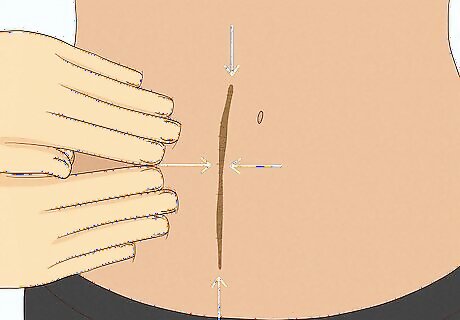
Myofascial release In this technique, physical therapists use their hands to slowly massage the skin and underlying tissues around the scar. They massage in various directions to feel for tissue restrictions (fascia), and then focus on improving movement in those areas. This treatment is ideal for patients experiencing pain or stiffness in the scar tissue area. This treatment isn’t recommended for people taking blood-thinning medications or those with weak bones, so contact your healthcare provider to discuss possible health risks. After myofascial release therapy, you may feel brief soreness in the stretched areas, but it should subside naturally in 24 hours.
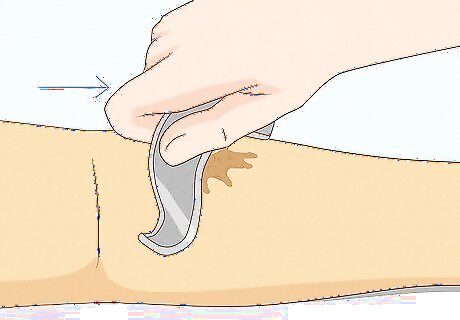
Instrument-assisted scar tissue massage (IASTM) This is a recently-adopted technique that physical therapists use to massage and mobilize scar tissue. It involves rubbing the scar tissue with stainless steel instruments, breaking up built-up collagen cells and reducing pain. IASTM is mainly used to treat surgical and traumatic scars. This massage is frequently used in athletes because it improves range of motion and reduces pain quickly, shortening rehabilitation time.

Stretching exercises Another common treatment to break down scar tissue is stretching and flexibility exercises. To help mobilize and elongate injured tissues, physical therapists prescribe a specific routine consisting of several slow, prolonged stretches. Many physical therapists also use kinesiology tape to hold the skin in a specific stretched position, increasing blood flow and promoting tissue remodeling. Stretches are often performed in conjunction with scar tissue massages, regardless of the type of scar.
Scar-Minimizing Procedures
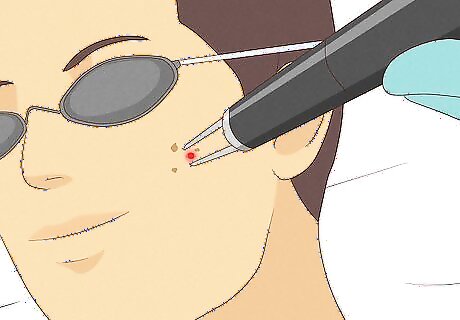
Laser therapy This procedure is often used to treat stable or faded scars, including acne, bite, burn, and C-section scars. With this treatment, a resurfacing laser creates microscopic holes in the scar tissue, allowing the tissue to heal in a healthy, normal function. This treatment can help decrease pain, improve mobility, and even relieve minor itching. Depending on the severity of the scar, it usually takes 3-12 monthly visits to completely minimize the appearance of the scar. Laser therapy works best in conjunction with other treatments, such as steroid injections.

Steroid injections Steroid injections are excellent for healing hypertrophic scars and keloids because they minimize the burning, itching, and redness that typically accompany these scars. Steroids are directly injected into the scar tissue to help soften and decrease the size of the scar. Steroid injections may lead to atrophy, skin ulcers, and discoloration, so discuss this treatment in-depth with your healthcare provider before trying it.

Shock wave therapy Extracorporeal shock wave therapy (ESWT) is a noninvasive treatment that breaks down injured tissue at the cellular level. Through compressed air or electromagnetic pulses, shock waves are delivered to the tissue directly, promoting healing and minimizing pain. This treatment improves the symptoms and appearance of post-burn hypertrophic scars. This treatment isn’t recommended if you’ve had a steroid injection less than 6 weeks ago.
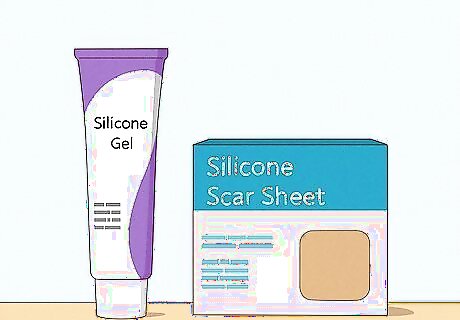
Topical treatments Silicone gel is proven to treat scar tissue and minimize the appearance of scars over time. When applied to the scar, silicone prompts the body to repair damaged blood vessels and shrink excess collagen, so it’s an ideal treatment for small hypertrophic and keloid scars. Many topical silicone gels are available without a prescription, but see a board-certified dermatologist to evaluate your scar before treating it at home. Apply silicone gel directly for 3-6 months for the best results. To avoid hyperpigmentation, avoid sun exposure while your scars are healing. Use sunscreen with an SPF of at least 35, and wear protective clothing when you go outside.
What is scar tissue?

Scar tissue is the body’s method of healing injured tissue. After an injury or surgery, collagen cells form over the wound site (scar tissue). Since these cells don’t know how to function normally, massage remodels them into healthy, mobile tissue. If your scar is over 2 years old, scar revision surgery is needed. Common types of scar tissue include: Keloids: thick, bumpy, red scars that commonly appear on chest, shoulders, and upper back Hypertrophic scars: thick, raised scars that commonly appear after a cut or scrape Contracture scars: tight scars that often occur after a burn injury Atrophic scars (depressed scars): tiny holes/pits in the skin, usually caused by cystic acne or chickenpox Adhesions (internal scar tissue): internal scars that form due to surgery, a muscle tear, or a broken bone Stretch marks: external scars that appear when people lose or gain weight rapidly, frequently seen on the upper arms, thighs, stomach, and chest area Flat scars: pinkish-red or purple scars that eventually blend into your normal skin tone














Comments
0 comment